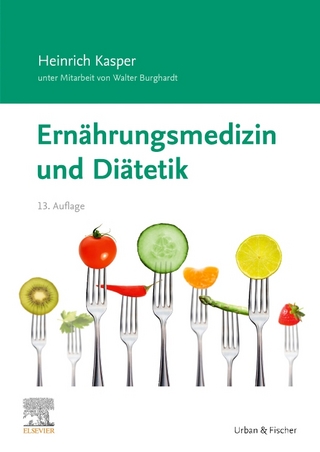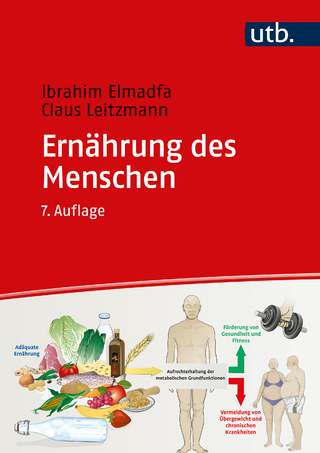
2020 Asia and the Pacific
regional overview of food security and nutrition, maternal and child diets at the heart of improving nutrition
Seiten
2021
Food & Agriculture Organization of the United Nations (FAO) (Verlag)
978-92-5-133853-7 (ISBN)
Food & Agriculture Organization of the United Nations (FAO) (Verlag)
978-92-5-133853-7 (ISBN)
Shares updates on progress toward SDG 2 and the World Health Assembly nutrition targets in Asia and the Pacific. The report’s findings show that progress has slowed, with an estimated 350.6 million people undernourished in 2019, about 51 percent of the global total.
The 2020 report on the State of Food Security and Nutrition in the Asia and Pacific region, provides an update on progress towards the 2030 targets (SDGs and WHA) at the regional and country level. Selected indicators look at undernourishment, food insecurity, childhood stunting, wasting and overweight, adult overweight, child minimum acceptable diet, exclusive and continued breastfeeding, and anaemia in women and children. While the region continues to work towards ending all forms of malnutrition and achieving Zero Hunger, progress on food security and nutrition has slowed, and the Asia and Pacific region is not on track to achieving 2030 targets. About 350.6 million people in the Asia and Pacific region are estimated to have been undernourished in 2019, about 51 percent of the global total. An estimated 74.5 million children under five years of age were stunted and a total of 31.5 million were wasted in the Asia and Pacific region. The majority of these children in the region live in Southern Asia with 55.9 million stunted and 25.2 million wasted children.Estimates predict a 14.3 percent increase in the prevalence of moderate or severe wasting among children under 5 years of age, equal to an additional 6.7 million children, due to the COVID-19 pandemic. With basic food prices and disposable incomes influencing household decisions on food and dietary intake, they are critical to improve food security and nutrition in the region. However, in the Asia and Pacific region, 1.9 billion people are unable to afford a healthy diet, driven by high prices of fruits, vegetables and dairy products, making it impossible for the poor to achieve healthy diets.In Part 2, the 2020 report promotes a systems approach to healthy maternal and child diets, involving and coordinating institutions and actors in the Food, Water and Sanitation, Health, Social Protection and Education systems, to collectively create the enabling environment for healthy diets. Integration of healthy diets and nutrition-focused Social Behavior Change Communication (SBCC) mainstreamed throughout these systems will lead to greater uptake and sustainability of healthy behaviours and caregiver's knowledge.
The 2020 report on the State of Food Security and Nutrition in the Asia and Pacific region, provides an update on progress towards the 2030 targets (SDGs and WHA) at the regional and country level. Selected indicators look at undernourishment, food insecurity, childhood stunting, wasting and overweight, adult overweight, child minimum acceptable diet, exclusive and continued breastfeeding, and anaemia in women and children. While the region continues to work towards ending all forms of malnutrition and achieving Zero Hunger, progress on food security and nutrition has slowed, and the Asia and Pacific region is not on track to achieving 2030 targets. About 350.6 million people in the Asia and Pacific region are estimated to have been undernourished in 2019, about 51 percent of the global total. An estimated 74.5 million children under five years of age were stunted and a total of 31.5 million were wasted in the Asia and Pacific region. The majority of these children in the region live in Southern Asia with 55.9 million stunted and 25.2 million wasted children.Estimates predict a 14.3 percent increase in the prevalence of moderate or severe wasting among children under 5 years of age, equal to an additional 6.7 million children, due to the COVID-19 pandemic. With basic food prices and disposable incomes influencing household decisions on food and dietary intake, they are critical to improve food security and nutrition in the region. However, in the Asia and Pacific region, 1.9 billion people are unable to afford a healthy diet, driven by high prices of fruits, vegetables and dairy products, making it impossible for the poor to achieve healthy diets.In Part 2, the 2020 report promotes a systems approach to healthy maternal and child diets, involving and coordinating institutions and actors in the Food, Water and Sanitation, Health, Social Protection and Education systems, to collectively create the enabling environment for healthy diets. Integration of healthy diets and nutrition-focused Social Behavior Change Communication (SBCC) mainstreamed throughout these systems will lead to greater uptake and sustainability of healthy behaviours and caregiver's knowledge.
| Erscheinungsdatum | 19.04.2021 |
|---|---|
| Zusatzinfo | col. ill., col. figs, tables |
| Verlagsort | Rome |
| Sprache | englisch |
| Themenwelt | Medizin / Pharmazie ► Gesundheitsfachberufe ► Diätassistenz / Ernährungsberatung |
| Sozialwissenschaften | |
| Technik ► Lebensmitteltechnologie | |
| Weitere Fachgebiete ► Land- / Forstwirtschaft / Fischerei | |
| ISBN-10 | 92-5-133853-1 / 9251338531 |
| ISBN-13 | 978-92-5-133853-7 / 9789251338537 |
| Zustand | Neuware |
| Haben Sie eine Frage zum Produkt? |
Mehr entdecken
aus dem Bereich
aus dem Bereich
Unter Mitarbeit von Walter Burghardt
Buch | Softcover (2020)
Urban & Fischer in Elsevier (Verlag)
56,00 €
Indikation, Diagnostik, Therapie
Buch (2024)
Thieme (Verlag)
80,00 €


